An unsolicited copy of a new magazine appeared in my mailbox this weekend, and it has brought to the forefront an issue that I have been batting around for a few months. The focus of the magazine is on crafting with natural materials. I flipped through it and saw things like felt, wool, cotton, natural food colors (like, from beets), beeswax, etc. Not surprisingly there wasn’t an ounce of polymer clay to be found.
Even in the beading article, the words “choose natural materials wherever possible” appeared, essentially excluding the multitude of beautiful polymer beads available these days.
I guess I started considering the idea of natural living, conserving resources, using renewable materials wherever possible, when I started blogging more regularly this summer. I found myself reading blogs like Tiny Choices where the entire focus is on reducing your ecological footprint. I observed bloggers like Amy Karol write about ridding her home of plastic bowls and cups and buying her children handmade wooden and fabric toys. And while I am still choosing to drive my minivan over a small hybrid, and I have no intention of giving up my washing machine in favor of an old-fashioned washboard, I have been making some more ecologically-sound choices inspired by things I’ve read.
For one, we’re using exclusively cloth napkins around here now. The only paper napkins we ever use are the ones we’ve collected from take-out restaurants, who always put more than you need in the bag. Initially I started with the cloth napkins because it was an easy sewing project for a beginner. Now, though, I can’t imagine going back to the paper kind – the cloth ones are so soft and nice, particularly after they’ve been broken in.
I bring heavy canvas bags with me when I do my food shopping. I don’t know why it took me so long to do this – as it turns out, I like shopping with these bags infinitely more than the paper or plastic variety. There’s nothing more handy than slinging 4-6 tote bags over your shoulders to get the whole grocery load in the house in one trip!
At the moment, aside from what I’ve already mentioned, my actions aren’t drastically different than they ever have been. What has changed is my way of thinking. When I have needed new kitchen things lately, I’ve considered the materials carefully before buying. I’m phasing out the plastics and nonstick stuff, and replacing with glass or stoneware as the need arises. In thinking about Christmas gifts for the boys this year, I’ve found myself drawn more to handmade, classic, wooden objects and less to the ubiquitous Made in China plastic monstrosities that I wouldn’t have previously thought twice about putting on the shopping list.
Plastic is the enemy lately. And as drawn as I am to some of the more natural materials out there (particularly since discovering fabric, sewing, and crafty mom blogs earlier this year) I still am under the spell of polymer clay. Polymer clay, which, in the right hands, can be transformed into a wonderful, colorful work of art. Polymer clay, which has held my interest and taken over my house for the last twelve years. Polymer clay, which is, essentially plastic.


This is not a topic I’ve given much thought to until now, and to be completely honest, I don’t know how I feel about it. These days, I refuse to buy new plastic mixing bowls when I can have glass. I turn my nose up at plastic cups when I can drink out of glass. I don’t have any interest in buying plastic building blocks for the boys, when they could stack wooden blocks instead. But give up my polymer clay? Should that form of plastic be the enemy as well? And will I one day start to perceive it as such despite myself? And even if I remain confortable with it, will there cease to be a market for my creations once more and more people start to “go green” and adjust their attitudes towards plastic?
If you’ve read this far, I’d like to know your thoughts. Are you enamored with polymer clay? Are you feeling the pull to utilize more renewable resources in your daily life? How do you feel about using a material like polymer clay, and does it bother you that it does nothing to reduce your ecological footprint?
[Edited 11/14/07 to add: This topic just came up today on Polymer Clay Daily. Have a look.]


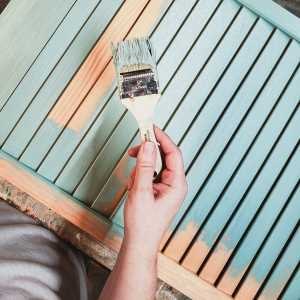
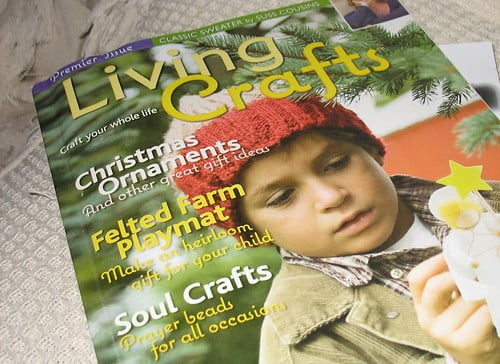
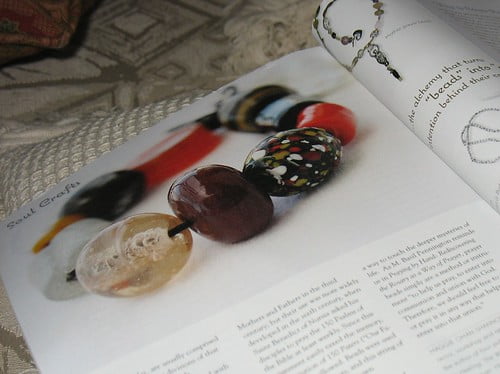
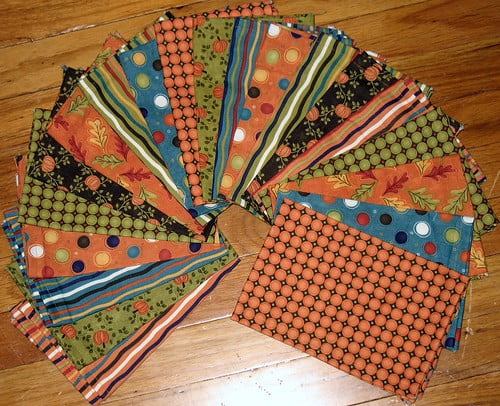
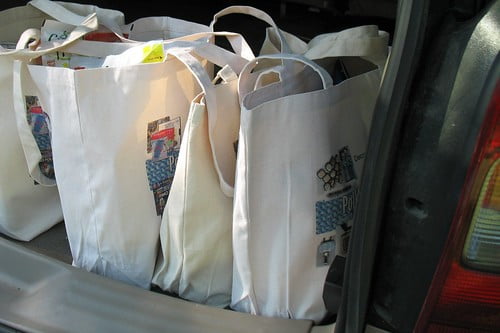
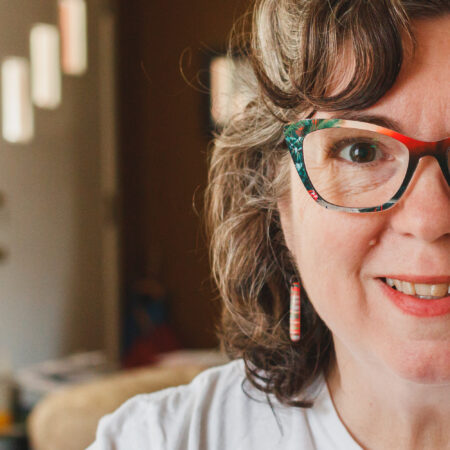
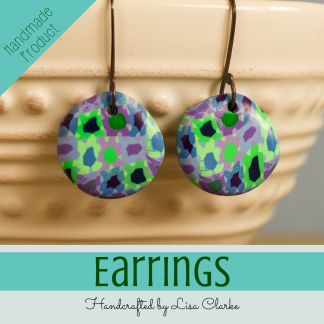
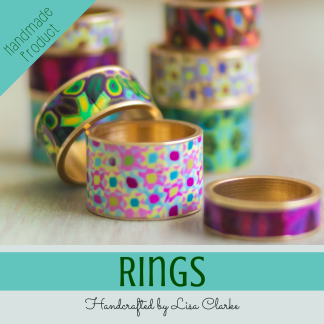
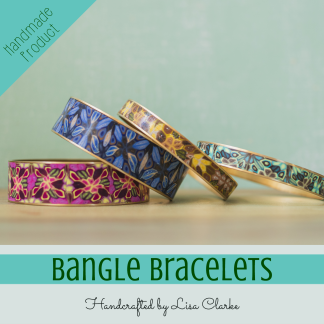

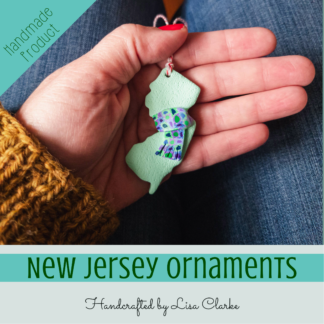
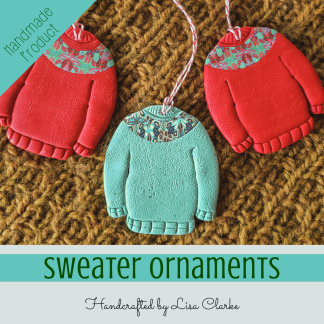
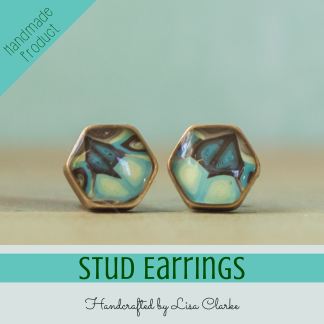
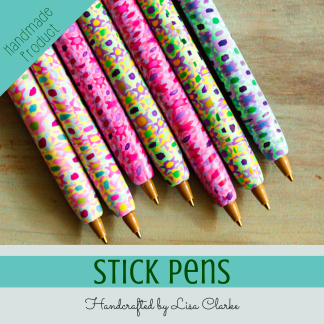
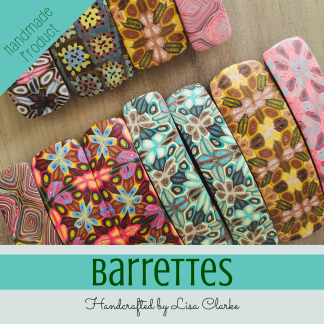
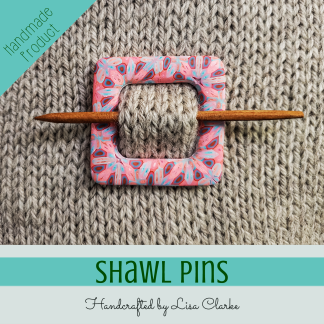
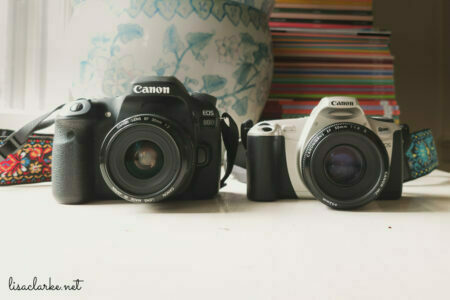













Great post, Lisa.
I love all the possibilities that polymer clay has, so I can’t imagine giving it up. Just the same, I’ve noticed that part of the reason I like Sculpey’s Ultralight & their coming-soon Studio clay is that they feel more organic to me, both before & after baking. Not that Premo’s plastic-y feel had ever bothered me before, but it just more enjoyable to work with something that softer & more paper-like…
I can’t say that I have really even *noticed* polymer’s plastic feel. It just feels like itself to me, if that makes any sense. I haven’t tried the new Studio clay, but I think Ultralight feels like marshmallows. (Although, I imagine if I tried to put a real marshmallow in my pasta machine, I’d regret it…) 😉
This is a very interesting topic Lisa. I have thought about this too, but I think I have been hooked on polymer clay too long to give it up. I can be impatient, so using traditional clay or even paperclay is just too long a process for me. I try to recycle and live as green as I can, and most of my other crafts involve recycling. I don’t think there will ever be enough people “Living green” in our lifetime to make polymer clay items obsolete. I also think plastic can be used in a “green” way. I recycle all of the plastic containers I can and reuse them for food storage, toy storage and whatever else I can think of. I use them to hold things in my son’s lunch instead of all those plastic bags, so I don’t think all plastic is the enemy, it’s what you do with it and how you dispose of it that is important. All I can hope for is that the things I make with polymer clay will be cherished and loved and stay out of the landfills.
See what Tamara – blockpartypress has been blogging about: Through My Eyes – Anything Can be Art …Right?
Well, that is a good point – about what you make not ending up in a landfill. I had been thinking more about the fact that in order to make something out of clay you have to buy newly-manufactured materials. There is no recycling program for polymer, unless you count re-using your junk clay. Which I can’t really do in my application.
We have been moving towards living more green here too. We had one set of solar panels installed four years ago and now are having a second set installed before the end of the year. We recycle everything possible. It isn’t mandatory here (yet) but we have a *blue* container (one of three on our block) and in goes everything but soda cans. Those I turn in for the $$ (I aint stupid!). We have a hybrid and I turned the truck in for a car that gets way better gas mileage. As for my clay…..you can pry it out of my cold dead hands before I will give it up. It IS my sanity….though it doesn’t make our footprint any smaller. I pretty much agree with Tamara in that I don’t think enough folks will live green in our lifetime to make my clay obsolete.
*plink* *plink*
See what Kathi has been blogging about: A “quick” update. Fun stuff
In the grand scheme of things, you probably do a lot more for the environment by switching to solar energy than you do by giving up a few pounds of clay.
Hey Lisa, love your blog! 🙂
This is such an interesting post, and really what the whole Tiny Choices thing is all about in the end– making choices. I think the point is to be making concious decisions, and just being aware that our decisions have an impact. I’ve switched to cloth napkins and cleaning rags, use shea butter and jojoba oil for moisturizing… but I still use traditional hair product to tame my curls. I also tend to the more “natural” crafts, but when something made of paper needs to be sealed… out comes the spray poly. I do think twice about it, and make sure there’s no other product that I could use instead. Your dilemma with polymer clay is a real one– it is straight-up plastic, after all– but it’s just like the rest of life… we need to make decisions we can personally live with.
I read a quote recently that said something to the effect of “do your environmental best 80% of the time, and give yourself a pass the other 20%.” I’d probably change the ratio to 90/10, but that still gives us a good bit of wiggle room. 🙂
See what Jenn has been blogging about: Tiny Choices Movie Review: Gimmie Green
That’s a great quote! I love your blog, too, and I have to admit that sometimes I read the profiles and wonder how on earth some of those people live the way they do – there are just things I think I can never give up! But then, the whole idea of making educated choices comes in, and I realize that it’s a lot easier than it seems. Take it one choice at a time. I don’t have to give up my minivan, but I *could* choose to avoid taking a particularly frivolous trip – or choose to use our smaller car for it instead.
I’m also encouraged by the fact that a year ago I never would have said I’d be using cloth napkins and bringing my own bags to the supermarket, but here I am. I wonder what surprising things I’ll be doing next year!
Generally the items made from polymer clay are made to last for at least the user’s lifetime. Granted, not all projects work out and sometimes clay items are discarded, but in general, small quantities are used and the items are made to last. To me, the lifespan of a material takes priority over whether it is ‘natural.’ A popsicle stick is made from natural wood, but how often do you see it in crafts meant to last? It takes energy to make that popsicle stick (or any craft material)–nearly all energy requires resources. I don’t think pclay is going anywhere :].
What a great point! So many natural materials are used to make essentially disposable crafts. Using plastic for a piece of art that is intended to be around for some time probably does have less of an environmental impact.
Oh you so make me want to learn to sew! I am a ceramic artist and maybe when I sell the business and retire I will buy a sewing machine. I love eating with cloth napkins, it would be great to use them all the time! You blog looks great – found you through Anna Marie’s blog. Looking forward to following your craft and sewing projects!
See what Jamie Lentzner has been blogging about: Big Week for Betty Lou….I mean JPD!
Welcome, Jamie! I’ve only been sewing since May, and I’ve been doing it on a $100 machine from Sears. I’m kicking myself for having waited so long!
I’ll have to check out your ceramics – that’s something I’d like to try someday.
Okay truth be told I love the clay thing stuff you use, I used to use it in college, and I had an earring business back in the late 80’s and early 90’s – I swear I could make anything with it! I miss making those tacky, glitter, rhinestone earrnings actually – they were sold all over the place (here in California where I live). I may have to send you a picture of one – so hideous. Good luck with sewing, maybe I should jump in – it is something I always wanted to do = throw pillows, curtains, etc. With paint I can FIX all my errors though. Take care!
As far as errors go, let’s just say I’ve gotten friendly with my seam ripper, LOL! Oh, and hideous earrings? I have a scary collection from the 80’s myself – I didn’t start making my own until 1995 when the big, flashy earring thing was pretty much over. Probably a good thing.
Let me tell you though, Lisa…people are sticking their heads in the sand. This topic got me spanked today on a certain forum. Let’s just say humans tend to err on the side of caution for the Meal Ticket, not for the birds and the bees.
After my 15 years of polymer clay ‘careering’, the truth about phthalates and bisphenols is coming to light in a BIG way.
Great subject. I for one am willing to sacrifice polymer clay at the altar of Greener Materials…but by the time I do that, they’ll have a Newer Better Formula, and I’ll be the Black Sheep…again!
So wudduya do, eh?
I read today (possibly in the same forum of which you speak) that Polyform and Fimo are going with phthalate-free formulas. I wonder if there’s any truth to that.
I have to admit I’m a head-in-the-sand type, but my motivations are usually more along the line of personal fulfillment than of the meal ticket variety. I get a lot of joy out of clay.
Still, if learning to sew this summer has taught me anything, it’s that it is possible to be lured away from polymer clay when I show an aptitude for other materials and an enjoyment of them. I am having a great time right now combining polymer clay and fabric, and I can imagine that I could give up clay altogether if I had to. The reasons would have to be pretty compelling, though. I’ve got a lot of years and a lot of shelf-space invested in this affliction 😉
Oh, you’re exactly right there.
The meal ticket wasn’t what I had in mind either when I fell for polymer clay. So yeah, it’s a real soul-search all ’round. If we could count on corporations to inform us truthfully and promptly would sure help me plan for my bottom line in the end though.
In the end, it’s really just fancy dough. Somebody will fill the gap.
Now speaking of motivation…
Hi Lisa, Great post. It is a complicated issue. I don’t think anything is all bad or good. The main issue with the phthalates is at the beginning of the chain, in my opinion. How it is handled in the manufacturing process. And the impact of this goes far beyond polymer clay. The number of products that use pvc in some form or another is longer than you could possibly imagine.
What is most important is that the discussion is making us all think about our actions, and the consequences.
BTW, Sarah Shriver once suggested it might be better to cure the scraps before throwing them away if you don’t save them and re-use them. That way there is less risk of plasticizers leaching out.
See what Judy has been blogging about: Fear and Hysteria in the Studio
Interesting tip from Sarah. I hadn’t heard that one before.
The phthalates issue seems to come up every couple of years in the polymer clay community. I’ve never been one to panic over it. I still bake my clay in my home oven (completely uncovered until relatively recently), I let my children play with it, and I’ve even been known to grab a snack while claying without washing my hands first.
I saw your “Fear and Hysteria” post yesterday and thought it was excellent. I greatly appreciate seeing the facts laid out by someone who has a background in chemistry. It helps to squelch the little nagging voice that sometimes pops up and asks if maybe I shouldn’t be so cavalier about my use of polymer clay 😉
My main motivation for writing this post was to address the perceptions of an increasingly green buying public. Given that polymer clay is plastic, and so many people are strongly anti-plastic these days, where does that leave us? I’m afraid to even open up the “how safe is it” can of worms like you did – you’re a brave one. Those discussions have a tendency to get ugly on the mailing lists!
Thanks for dropping by and weighing in. I encourage anyone else who may be reading this to visit Judy’s blog and see what she has to say on the phthalates issue. It’s interesting reading.
Hi Lisa! like you, i’ve been months thinking about this ecological impact of polymer clay. as clayer just can agree with most of the comments done here, this material is an addictive way of expression. but i think the PVC still being a problem, at the end it’s plastic.
the point is that us, as users of the product, have 2 options, stop working with this material (obviously nobody really wants) or demand the producers a cleanest clay, there are some kind of non-contaminant polymers made with vegetables. On a side i think we just can leave it up and wash our hands about this, but on the other side it’s manufacturers responsibility because, and there’s no doubt about this, their ecological footprint during the fabrication process is much bigger than ours.
Anyway, last days everybody talks about this and is a point to start working. ma be can be created a kind of “ecological polymer clayers association” to do pressure on the different marks producers of our loved clay.
kisses from spain
Hi, Lu. Yes, that’s a great point about the manufacturers creating a larger ecological footprint than we ever will. We can influence the manufacturers just by changing our buying habits, if necessary.
Thanks for dropping by!
I have been working in polymer clay for thirty years now. I live in an eco village, where everyone is concerned about the environment, and nobody has ever approached me about transitioning back to earthenware clay. In fact, everyone has battled my efforts to purchase a proper kiln to begin working with PMC! But, back to the point at hand; unlike plastic bags or other plastic packaging, polyclay is not filling up landfills. If you want to help the environment, stop using disposable diapers and continue making beautiful work in polymer clay. Art tends not to be disposed of, and continues to contribute to the world after it is created, so it has a small environmental footprint. So, make your polyclay art without guilt, friends and neighbors!
I’m glad to hear your perspective on this, since it seems to be a unique one, living in an eco village. Very interesting!
I’m glad to be beyond the diaper stage around here – we always used disposables i the past, but if I had to do it again, my conscience would tell me to go with cloth – cloth just seems so icky to clean up, though. Luckily at the moment it’s not an issue!
What is the kiln objection about? Would there be the same issues surrounding the use of a small “hot pot?” I have one of those that I bought when I first started playing with PMC and couldn’t justify the cost of a kiln.
Well, my neighbors seem concerned that the kiln would be “environmentally unfriendly,” for some reason. I have tried to explain, that modern jewelry kilns are clean and easy to run, but it is not really a matter of logic with my well-meaning neighbors. Their ideas are old, and no amount of showing them brochures on modern kilns makes any diffrence to them. Besides, I may have another problem once I do get a kiln; my same neighbors, who fought me tooth and nail not to get the kiln, would then expect to be able to use it themselves once I had it set up. Now, I know how to run a kiln, but these folks…nice people and all, but I wouldn’t want to share my kiln woth them! It’s okay, I’ll figure something out!
Hi! I just happened across your blog and love it! I was working on a post for my blog on how our family is going green and saw your pic of cloth napkins (through google images) and I was wondering if I could use your photo. I of course would direct the pic to your page and give you credit for the photo, etc… Please let me know! Thanks!
See what Mandy has been blogging about: Kids Unplugged!
Sure! Be my guest 🙂 Don’t know if you saw this post, but I’ve gone kind of cloth napkin crazy in the past year. I will never go back to paper!